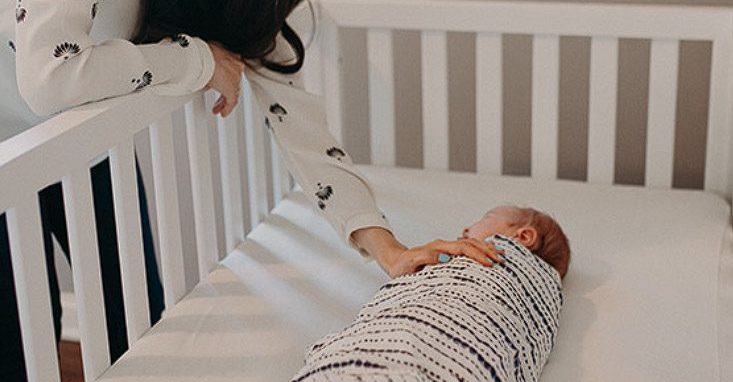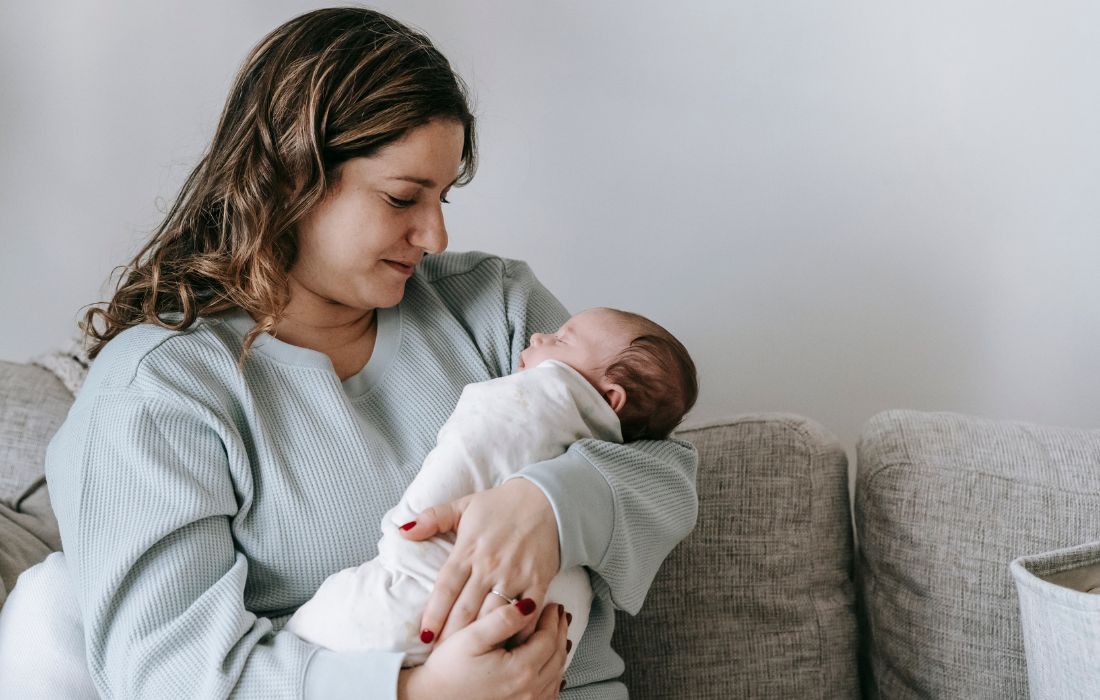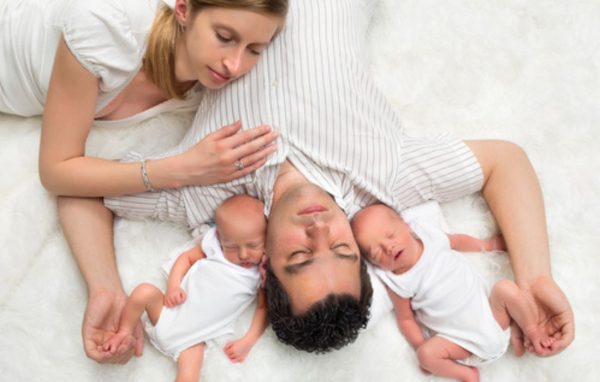What You Want To Know on Room Sharing and Safe Sleeping for Newborns
When you’re bringing home a new baby you want to do the safest thing possible for them. When it comes to newborn sleep, boy has it changed over the years! From putting babies on their stomachs to their backs, rules are always changing.
Currently, the American Academy of Pediatrics (AAP) recommends that infants should sleep on their backs and room-share until at least 6 months (and longer if mothers continue to feed at night) for SIDS prevention. This recommendation comes from years of evidence and is the safest type of sleeping for newborns.
As the expert on baby sleep, I’m here to share some insight on safe sleeping for your new little bundle of joy. Today we’ll discuss more on room sharing, safe sleep, and current recommendations to prepare your family for the most trusted sleep possible.

What Does Room Sharing Mean and How’s it Different Than Bed Sharing?
Room sharing is when a newborn sleeps on an independent sleep surface in the parent’s room for easy access and safety. This is not the same thing as bedsharing which is when a child sleeps in the same bed as their parent.
Having your baby in a crib right next to you, bassinet that you can reach over and touch, or in a “co-sleeper” that attaches to the side of your bed — makes it easy to feed them at night without having to get up. You have the peace of mind of having your baby literally at your fingertips, but you don’t have to worry about the safety challenges of bed-sharing. For moms who have had C-sections and have difficulty getting up and moving around for the first few weeks, this setup can be particularly helpful.
You’ll also want to consider a backup plan in case room sharing doesn’t work well for either your baby or you. Perhaps you find that your baby is particularly sensitive to your partner’s snoring or you’re unable to sleep because you pop up every time you hear your baby stirring.
Your backup plan may be moving the bassinet into another room and even having one parent sleep on a separate mattress next to it. Make sure you have discussed your room sharing plan with your partner and are making choices that support your family’s well-being and provide safe sleeping for your newborn.
A Tough but Real Topic: Sudden Infant Death Syndrome (SIDS)
Sudden infant death syndrome (SIDS) is the unexplained death, usually during sleep, of a seemingly healthy baby within the first year. SIDS is also known as crib death because the newborn often dies in their crib. We know it’s hard to even imagine, but it’s a reminder how important safe sleep is.
The exact cause of SIDS is unknown, but it’s thought to be related to an inability to get sufficient oxygen. Either the infant’s access to air is blocked because of their position (on their stomach or too close to pillows or blankets), or their ability to breathe is hampered by deep sleep caused by the comfortable stomach position.
Although the exact cause is unknown, several recommendations correlate highly with the prevention. You’ll see references to SIDS prevention and safe sleeping for newborns in my new book called The Sleep Lady’s Gentle Newborn Sleep.
Safe Sleeping for Newborns: Findings from the AAP
In 2022, the AAP stated that evidence shows sleeping in the parents’ room on a separate, safe surface lowers the chance of SIDS by as much as 50 percent. It’s impactful to think that your baby in the same room sleeping in a safe environment lowers the risks that much.
As a parent, it’s hard not to second-guess yourself. Knowing you’re doing everything you can to assure your newborn sleeps safely gives you reassurance and confidence. Let’s go over more tips.First Candle, an organization devoted to reducing sudden infant deaths shares their top ten safe sleep for newborns recommendations below:
- Always place the baby on their back for every sleep time.
- Use a firm and flat sleep surface covered with a tight-fitting sheet.
- Keep soft objects and loose bedding out of the baby’s sleep area. There should be nothing in the sleep area but the baby.
- Room sharing is safer than bed sharing.
- Breastfeed if possible. Breastfeeding is even more effective at protecting against SIDS if it is done exclusively (not combined with formula).
- Avoid smoke exposure and alcohol and drug use (ever over-the-counter drugs) during pregnancy and after birth.
- Consider offering a pacifier at nap time and bedtime once breastfeeding is firmly established.
- When you get tired, put your baby down in a safe place: a crib, play yard, or bassinet.
- Practice supervised tummy time to build neck, arm, and shoulder muscles and get baby rocking, scooting, and crawling.
- Attend all well-baby checkups and immunize the baby on a schedule.
We couldn’t agree more that these recommendations will keep your baby safe. While there is still so much to learn with SIDS, we want to take what we do know and apply it to our daily lives. This provides the safest type of sleep for our newborn and helps you rest easy as a parent.
Kim & The Sleep Lady Team Are Here For Your Family
When it comes to safe sleep for your newborn, I give you tools to not only make the transition smooth so you won’t have to even think about “crying it out,” but empower you as a parent. Tackling sleep’s arguably one of the hardest tasks as a parent but The Sleep Lady’s here for you and your baby!
Sign up to preorder my new book here and get some book bonuses before its release in March!
Step 1: Buy the book from any of the following: Amazon | Barnes & Noble | Target
Step 2: Enter your info to receive your bonuses here.



